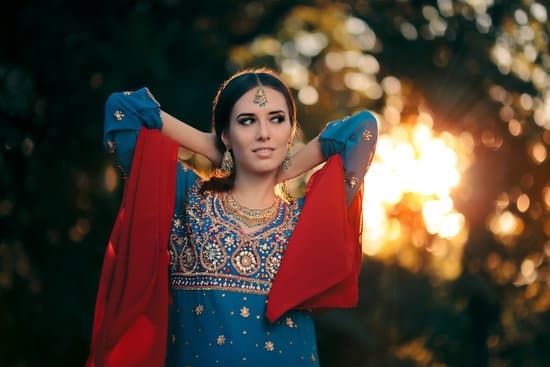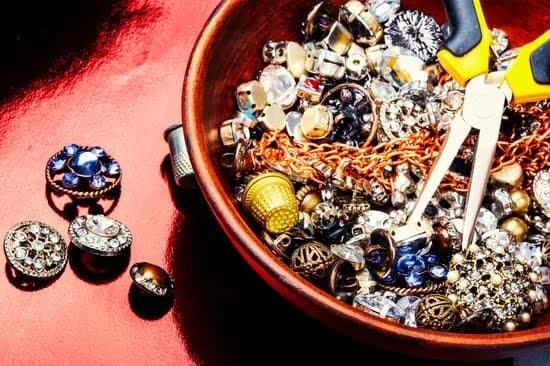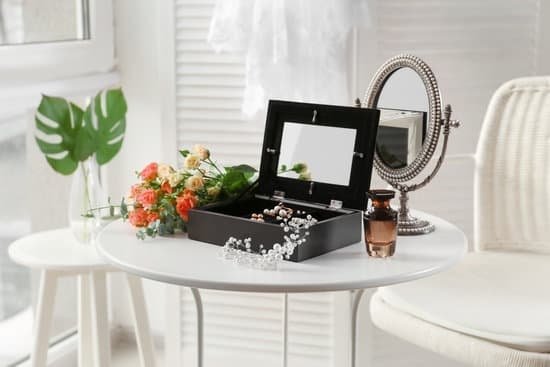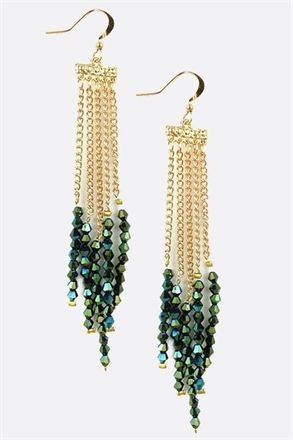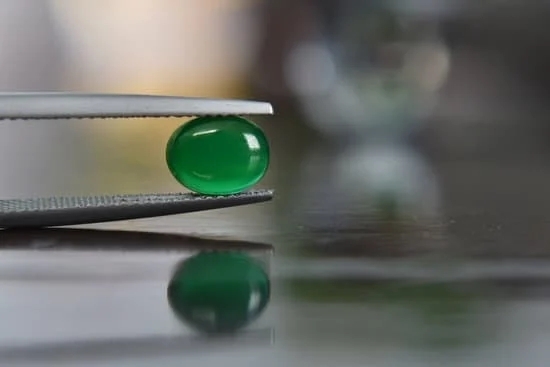The history of jewelry in the 1920s was a period of significant transformation and innovation in design, technique, and social influence. The Roaring Twenties marked a time when traditional constraints were being cast aside, and a new era of modernity and liberation was taking hold. This pivotal decade set the stage for a jewelry evolution that would leave an indelible mark on the industry for years to come.
The rise of Art Deco played a crucial role in shaping the designs of jewelry during this period. Its influence can be seen in the clean lines, geometric shapes, and bold colors that became emblematic of 1920s jewelry. The aesthetic reflected the spirit of progress and modernism that defined the era, making it a defining characteristic of the jewelry of this time.
One cannot discuss the history of jewelry in the 1920s without mentioning the notable trends associated with flappers and Gatsby glamour. These iconic styles embodied the newfound sense of freedom and liberation that characterized this era. From long pearl necklaces to statement headpieces, these trends symbolized boldness and individuality – key elements that continue to resonate within modern-day fashion.
The Rise of Art Deco
During the 1920s, the Art Deco movement emerged as a major influence on jewelry designs. This artistic and design style, which originated in France, was characterized by its geometric shapes, bold colors, and luxurious materials. The sleek and modern aesthetic of Art Deco perfectly captured the spirit of the Roaring Twenties, making it a popular choice for jewelry during this time.
Some key features of Art Deco jewelry designs included:
- Geometric Shapes: Pieces often featured angular and symmetrical designs, such as square or rectangular cut gemstones and straight lines.
- Bright Colors: Jewelry makers incorporated vibrant hues like emerald green, sapphire blue, and ruby red to add a pop of color to their creations.
- Luxurious Materials: Platinum and white gold were favored metals for setting precious gemstones like diamonds, emeralds, rubies, and sapphires.
Art Deco jewelry also drew inspiration from sources such as ancient Egypt, African art, and East Asian motifs. This eclectic mix of influences resulted in unique and visually striking pieces that reflected the modern sensibilities of the era.
Notable designers such as Coco Chanel, Jean Fouquet, and Suzanne Belperron embraced the Art Deco style in their jewelry creations. Their innovative use of materials and techniques helped establish Art Deco as a defining aesthetic in the history of jewelry in the 1920s. The legacy of these designers continues to influence contemporary jewelry makers today.
Notable Jewelry Trends of the 1920s
The 1920s marked a significant shift in the social and cultural landscape, which had a profound impact on jewelry trends of the era. This period was characterized by a rebellious attitude and a desire for freedom, as seen in the rise of the Flapper lifestyle and the glamour associated with F. Scott Fitzgerald’s novel “The Great Gatsby.” The influence of these societal changes was evident in the notable jewelry trends that emerged during this time.
1. Art Deco Aesthetic: One of the most prominent jewelry trends of the 1920s was the Art Deco style, which embraced geometric shapes, bold colors, and intricate designs. This aesthetic influenced not only jewelry but also fashion, architecture, and visual arts. Art Deco jewelry perfectly captured the spirit of modernity and sophistication that defined the decade.
2. Costume Jewelry: With the changing social dynamics and economic challenges of the post-World War I era, many people turned to costume jewelry as an affordable way to stay fashionable. These pieces often featured colorful glass beads, imitation gemstones, and innovative materials like Bakelite. The accessibility of costume jewelry allowed individuals from all walks of life to partake in the latest trends.
3. Long Pearl Necklaces: Inspired by the iconic Flapper look, long strands of pearls became an essential accessory for women during this time. These necklaces were often worn layered or knotted for a dramatic effect and exuded a sense of liberation and modernity. It’s no surprise that pearls became synonymous with 1920s fashion and continue to be associated with this era today.
The history of jewelry in the 1920s is fascinating in its reflection of society’s transformation during this pivotal decade. From Art Deco influences to innovative materials used in costume jewelry, the notable trends from this era continue to inspire contemporary designers and enthusiasts alike.
Materials and Techniques
The history of jewelry in the 1920s is marked by significant innovations in materials and techniques used in jewelry making. This era saw a departure from the ornate and intricate designs of the previous Victorian and Edwardian eras, giving way to a more modern and streamlined aesthetic.
One of the key developments during this time was the rise of platinum as the primary metal used in jewelry. Its strength and malleability allowed for intricate and delicate designs that were not possible with other metals.
Another important innovation during this period was the use of geometric shapes and angles in jewelry design, influenced by the Art Deco movement. The clean lines and bold patterns seen in Art Deco architecture and design were translated into jewelry, creating a sharp contrast to the flowing, organic forms of earlier periods. This shift in design also led to the popularity of gemstones such as diamonds, emeralds, and sapphires, which complemented the geometric aesthetic with their faceted cuts.
In terms of techniques, advancements in diamond cutting made it possible to create new cuts such as the emerald cut and baguette cut. These cuts emphasized clarity and symmetry, complementing the geometric designs that were prevalent during this time.
Additionally, jewelers began experimenting with new methods of setting stones, such as invisible settings that gave the illusion of gems floating within a piece of jewelry. These innovations not only reflected the modern sensibilities of the era but also pushed the boundaries of traditional jewelry craftsmanship.
| Materials | Techniques |
|---|---|
| Platinum | Diamond cutting advancements |
| Gemstones (diamonds, emeralds, sapphires) | Invisible stone settings |
| Clean lines and bold patterns | Experimentation with new methods of setting stones |
Famous Jewelry Designers of the Era
The 1920s marked a significant period in the history of jewelry, as it saw the emergence of several famous jewelry designers whose contributions and legacy continue to influence the industry today. One such notable figure is Suzanne Belperron, a French jewelry designer known for her bold and innovative designs that challenged traditional conventions. Belperron’s use of unconventional materials such as wood, rock crystal, and colored gemstones set her apart from her contemporaries and earned her a devoted clientele.
Another influential designer of this era was Jean Després, whose modernist approach to jewelry design revolutionized the industry. Després’ geometric forms and abstract motifs reflected the Art Deco movement’s influence on jewelry trends in the 1920s. His work continues to be revered for its creativity and avant-garde aesthetic.
In addition, René Lalique made significant contributions to the world of jewelry during this time. Lalique’s use of glass, enamel, and horn in his creations elevated jewelry to wearable art. His mastery of incorporating natural elements into his designs captured the essence of the Art Nouveau movement while embracing the modernistic spirit of the 1920s.
These designers not only shaped the fashion landscape but also influenced social norms by redefining what was considered beautiful and valuable in the realm of jewelry. Their innovative techniques and avant-garde aesthetic continue to inspire contemporary designers.
| Famous Designer | Contribution |
|---|---|
| Suzanne Belperron | Use of unconventional materials and bold designs |
| Jean Després | Revolutionized industry with modernist approach |
| René Lalique | Mastery of incorporating natural elements into designs |
The Social and Cultural Impact of Jewelry in the 1920s
The 1920s was a decade of significant social and cultural change, and this had a direct impact on the world of jewelry. From the rise of the flappers to the influence of The Great Gatsby, jewelry played a crucial role in reflecting and shaping the attitudes and lifestyle of the era.
The Rise of Women’s Liberation and Its Influence on Jewelry
One of the most significant social changes of the 1920s was the rise of women’s liberation. With women gaining increased independence, they also sought to express themselves through fashion and jewelry. The traditional constraints of corsets and long skirts gave way to shorter, more liberating styles that allowed for greater movement – and this included jewelry. Long strands of pearls, dangling earrings, and layered bracelets became popular accessories that reflected the newfound freedom and confidence of women during this time.
Jewelry as a Status Symbol in Society
In addition to being an expression of personal style, jewelry in the 1920s also served as a status symbol. The economic prosperity following World War I allowed for many people to indulge in luxury items, including fine jewelry.
In particular, those who could afford pieces from renowned jewelers such as Cartier or Tiffany & Co. were seen as members of the elite class. Jewelry became a way for individuals to showcase their wealth and social standing, further emphasizing its importance in 1920s society.
The Influence of Hollywood on Jewelry Trends
The emergence of Hollywood as a major entertainment industry during the 1920s also played a significant role in shaping jewelry trends. As films became more lavish and glamorous, so too did the jewelry worn by movie stars both on-screen and off-screen.
This had a trickle-down effect on mainstream fashion, with individuals eager to replicate the glitz and glamour they saw in theaters. This period marked an increase in demand for statement pieces such as diamond-encrusted brooches, cocktail rings, and elaborate headpieces – all inspired by the opulence displayed by leading ladies in Hollywood films.
Iconic Jewelry Pieces of the Decade
The 1920s was a decade of unprecedented change, not only in society and culture but also in the world of jewelry. The era saw the rise of renowned jewelry houses such as Cartier and Tiffany & Co. which played a significant role in shaping the iconic pieces of the decade.
Cartier: Pioneering Luxury Jewelry
One of the most influential jewelry houses of the 1920s, Cartier was known for its exquisite craftsmanship and innovative designs. The brand’s signature style during this period was characterized by geometric shapes, vibrant colored gemstones, and lavish materials such as platinum and diamonds. Notable pieces from Cartier during the 1920s include the iconic Tutti Frutti collection, which featured vibrant and intricately carved gemstone designs inspired by Indian art.
Tiffany & Co.: Timeless Elegance
Tiffany & Co. also made a lasting impact on the jewelry scene during the 1920s with its timeless designs and commitment to quality craftsmanship. The brand’s Art Deco-inspired pieces emphasized clean lines, bold colors, and a modern aesthetic that appealed to the fashionable elite of the era. One of Tiffany & Co.’s most famous creations from this period is the “Garden” necklace, a breathtaking piece adorned with stunning gemstones that captured the essence of Gatsby glamour.
The history of jewelry in the 1920s would not be complete without acknowledging these iconic pieces from Cartier and Tiffany & Co. which continue to inspire contemporary designers and collectors alike. Their innovative designs and enduring legacy have solidified their place as pioneers in luxury jewelry, shaping trends that continue to influence the industry today.
The End of an Era
As the late 1920s approached, a shift in jewelry trends started to take place due to the impact of world events. The stock market crash of 1929, also known as Black Tuesday, marked the end of the era of opulence and extravagance that characterized the decade. With the onset of the Great Depression, people’s priorities and spending habits changed, leading to a noticeable shift in jewelry trends.
The economic downturn led to a decrease in demand for fine jewelry, particularly among those hit hardest by the depression. Instead of elaborate and ostentatious pieces, more subdued and affordable jewelry became popular during this time. Costume jewelry, made from less expensive materials but still showcasing stylish designs, gained popularity as people sought to adorn themselves with fashionable accessories while being mindful of their finances.
Despite these challenges, jewelry designers found ways to adapt and innovate. Many turned to more affordable materials such as glass and plastic while still maintaining high-quality craftsmanship. This era marked a turning point in jewelry making techniques and paved the way for modern costume jewelry that continues to be popular today.
In conclusion, the late 1920s saw a significant transformation in jewelry trends as world events shaped consumer preferences and industry practices. While it marked the end of an era characterized by luxury and excess, it also set the stage for new innovations in jewelry making and design that would continue to evolve in response to changing societal needs and preferences.
The history of jewelry in the 1920s is not just a reflection of glamorous pieces worn by flappers and socialites; it is also a testament to how external factors can influence fashion and design trends on a global scale.
Frequently Asked Questions
What Kind of Jewelry Was Popular in the 1920s?
In the 1920s, costume jewelry was very popular, especially long pearl necklaces, beaded necklaces, and Art Deco style pieces. These bold and colorful accessories complemented the fashionable flapper look of the time.
What Gemstones Were Popular in the 1920s?
The 1920s saw a rise in popularity for colorful gemstones such as sapphires, rubies, emeralds, and jade. These vibrant colors were in line with the bold and lavish fashion trends of the era, making them highly sought after for jewelry pieces.
What Kind of Earrings Did Flappers Wear?
Flappers often wore long, dangling earrings that emphasized movement and added a sense of drama to their look. Tassel earrings, chandelier earrings, and Art Deco geometric designs were all popular choices among women embracing the flapper style of the Roaring Twenties.

Welcome to my jewelry blog! My name is Sarah and I am the owner of this blog.
I love making jewelry and sharing my creations with others.
So whether you’re someone who loves wearing jewelry yourself or simply enjoys learning about it, be sure to check out my blog for insightful posts on everything related to this exciting topic!

